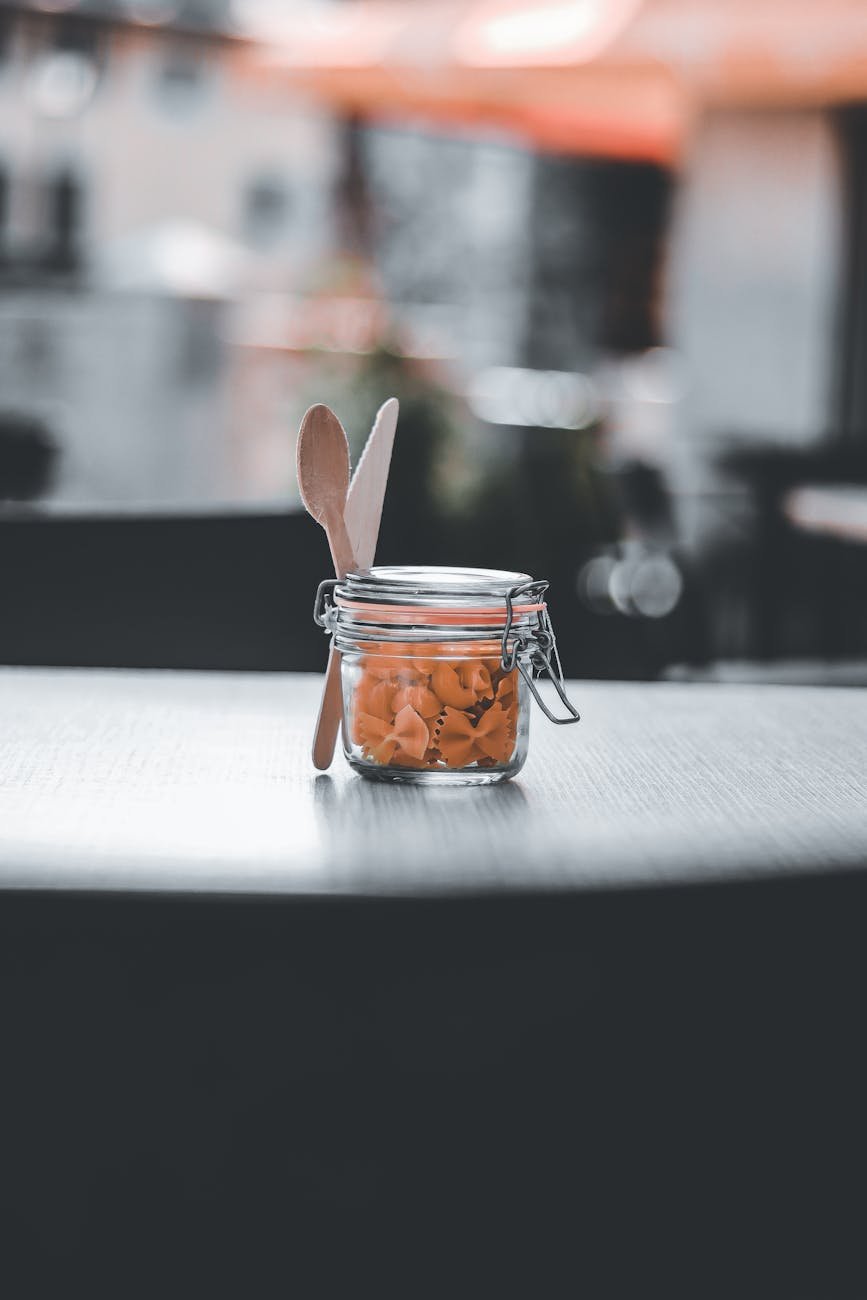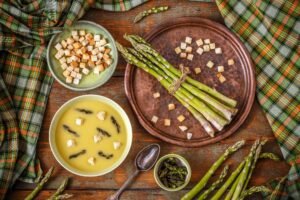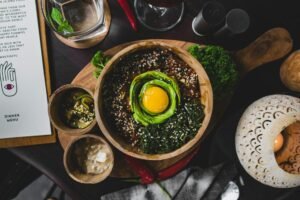Cooking Asparagus: To Boil or Not to Boil
When it comes to preparing asparagus, one common question that arises is whether to boil the spears before further cooking. Boiling asparagus is a traditional method that can be both beneficial and disadvantageous, depending on the desired outcome.
Benefits of Boiling Asparagus
Boiling asparagus can be advantageous for several reasons. It is a simple and quick method that can be especially useful when cooking large quantities. Boiling can also soften the fibrous exterior of asparagus, making it more palatable and easier to digest. Additionally, boiling may be preferred for recipes requiring uniformly tender asparagus, such as in soups or purées.
Here are some benefits of boiling asparagus:
- It’s a quick cooking method, usually taking between 2 to 4 minutes.
- It can make asparagus more tender, especially the thicker stems.
- Boiling allows for easy seasoning as salt can be added to the water for flavor.
Drawbacks of Boiling Asparagus
Despite its benefits, boiling asparagus also has its drawbacks. One concern is the potential loss of nutrients. Water-soluble vitamins, such as vitamin C and some B vitamins, can leach out into the boiling water. Moreover, overboiling asparagus can lead to a mushy texture, which may not be desirable for all dishes.
The drawbacks of boiling asparagus include:
- Potential nutrient loss, with water-soluble vitamins seeping into the cooking water.
- Risk of overcooking, which can result in a mushy texture and diminished flavor.
- Less opportunity for caramelization, which can enhance flavor when using other cooking methods.
For those considering whether to boil asparagus, it is important to weigh these pros and cons. There are also various alternative methods to prepare asparagus that can retain more nutrients and offer different textures and flavors. For more ideas on how to prepare this versatile vegetable, explore our articles on how can you cook asparagus?.
Alternative Cooking Methods
While boiling is a common cooking method for asparagus, there are several other techniques that can enhance the flavor and texture of this versatile vegetable. For those wondering how can you cook asparagus?, let’s explore some alternative methods such as roasting, grilling, and sautéing.
Roasting Asparagus
Roasting asparagus is a simple and delicious way to prepare this vegetable. It brings out a natural sweetness and can result in a delightful, crispy texture. To roast asparagus, one typically preheats the oven to around 400°F (200°C), tosses the asparagus spears with some olive oil and seasonings, and then roasts them for approximately 15-20 minutes.
| Oven Temperature | Cooking Time |
|---|---|
| 400°F (200°C) | 15-20 minutes |
Roasting helps caramelize the natural sugars in asparagus, leading to a rich and slightly nutty flavor. It’s a perfect method for those who enjoy a bit of crunch in their vegetables. For more detailed instructions, visit how can you cook asparagus?.
Grilling Asparagus
Grilling asparagus can infuse the spears with a smoky flavor that’s ideal for outdoor barbecues or to pair with grilled meats. Preheat the grill to a medium-high heat, and prepare the asparagus by coating it lightly with oil and seasoning. Place the asparagus perpendicular to the grates and grill for about 3-5 minutes on each side.
| Grill Temperature | Cooking Time |
|---|---|
| Medium-High | 3-5 minutes per side |
One should turn the asparagus occasionally to ensure even cooking and to achieve those characteristic grill marks. This method is particularly favored during the warmer months and offers a charred texture that many find appealing. For additional grilling tips, explore how can you cook asparagus?.
Sauteing Asparagus
Sautéing is a quick and efficient method to cook asparagus while preserving its color and crisp-tender texture. Heat a pan over medium heat, add a small amount of oil or butter, and then add the asparagus. Cook for about 5-7 minutes, stirring occasionally.
| Heat Level | Cooking Time |
|---|---|
| Medium | 5-7 minutes |
Asparagus sautéed in this manner is often bright green and retains a good amount of its natural crunch. It’s also an excellent way to infuse the vegetable with flavors from garlic, herbs, or other aromatics. Sautéing is a versatile technique and can be easily adapted to a variety of dishes. Discover more about this method at how can you cook asparagus?.
Each of these cooking techniques offers a unique way to enjoy asparagus. Whether looking for a crispy, smoky, or vibrant green finish, these methods cater to different tastes and preferences. By experimenting with roasting, grilling, or sautéing, one can discover the full range of flavors that asparagus has to offer.
Pros and Cons of Boiling Asparagus
When considering how to cook asparagus, boiling is often a method that comes to mind. It’s a traditional cooking technique, but it’s worth weighing the advantages and disadvantages, especially in terms of nutrient retention and the impact on texture and flavor.
Retention of Nutrients
Boiling asparagus is a double-edged sword in terms of nutrient retention. On one hand, it can lead to the loss of water-soluble vitamins, such as vitamin C and some B vitamins, which are important for overall health. On the other hand, it can make certain nutrients, like vitamin A, more available for absorption.
| Nutrient | Retention Rate After Boiling |
|---|---|
| Vitamin C | 60-70% |
| B Vitamins | 50-60% |
| Vitamin A | Increased availability |
To maximize the nutritional benefits while boiling asparagus, one should aim to use minimal water and cook the asparagus for the shortest time necessary. This helps to reduce the leaching of vitamins into the cooking water. For more on nutrient retention during cooking, explore our detailed guide on how can you cook asparagus?.
Texture and Flavor Considerations
The texture of asparagus after boiling can vary greatly depending on the cooking time. Boiling for just a few minutes can result in crisp-tender asparagus, which retains some bite, while extended boiling can lead to a very soft texture that may not be as appealing to some palates.
Flavor-wise, boiling can dilute the natural taste of asparagus, making it less pronounced. However, this can be a benefit if one intends to flavor the asparagus with additional seasonings or sauces post-cooking.
| Cooking Time | Resulting Texture | Flavor Intensity |
|---|---|---|
| 3-5 minutes | Crisp-tender | Mild |
| 5-10 minutes | Tender | Very mild |
| 10+ minutes | Very soft | Diluted |
In conclusion, boiling asparagus is a method that can work for some dishes, especially when a softer texture is desired, or when the asparagus will be part of a larger, more flavorful dish. However, if the goal is to enjoy the vegetable’s natural crispness and robust flavor, one might consider other cooking methods such as roasting, grilling, or sautéing, which are discussed in our comprehensive article on how can you cook asparagus?.
Tips for Cooking Asparagus
When it comes to preparing asparagus, there are a variety of ways to enhance its natural flavor and achieve the perfect texture. Here are some tips on seasoning, cooking times, and techniques as well as suggestions for serving and pairing.
Seasoning and Flavoring
Asparagus is known for its unique, earthy taste, which can be complemented with the right seasonings. A simple dressing of olive oil, salt, and pepper works well for most cooking methods. However, for those who want to experiment with flavors, consider adding:
- Minced garlic or garlic powder
- A squeeze of lemon juice or lemon zest
- Grated Parmesan or other hard cheeses
- A drizzle of balsamic vinegar
- Fresh herbs such as parsley, thyme, or tarragon
Remember that asparagus can also absorb flavors during cooking, so using a seasoned broth or marinating beforehand can infuse additional taste.
Cooking Times and Techniques
Asparagus can be prepared using various techniques, and cooking times may vary depending on the method and the thickness of the stalks. Here’s a quick reference:
| Cooking Method | Thin Stalks | Medium Stalks | Thick Stalks |
|---|---|---|---|
| Boiling | 3-5 minutes | 5-7 minutes | 7-10 minutes |
| Roasting | 10-15 minutes | 15-20 minutes | 20-25 minutes |
| Grilling | 5-10 minutes | 10-15 minutes | 15-20 minutes |
| Sauteing | 5-7 minutes | 7-10 minutes | 10-13 minutes |
To ensure even cooking, consider peeling the bottom half of thicker asparagus stalks. The spears should be tender and bright green when properly cooked.
Serving Suggestions and Pairings
Asparagus is a versatile vegetable that can be served in a variety of ways. It can be a side dish, a component of a salad, or part of a main course. Here are some serving suggestions:
- Pair with poached eggs and hollandaise sauce for a classic brunch option.
- Include in stir-fries with a mix of vegetables and your choice of protein.
- Serve alongside grilled fish or chicken for a healthy, balanced meal.
- Mix into pasta dishes with a creamy sauce or a light vinaigrette.
For those interested in more creative ways to incorporate asparagus into their meals, check out our comprehensive guide on how can you cook asparagus?. This guide provides inspiration and instructions for dishes that highlight the unique qualities of asparagus, ensuring that home chefs can enjoy this nutritious and delicious vegetable to the fullest.



